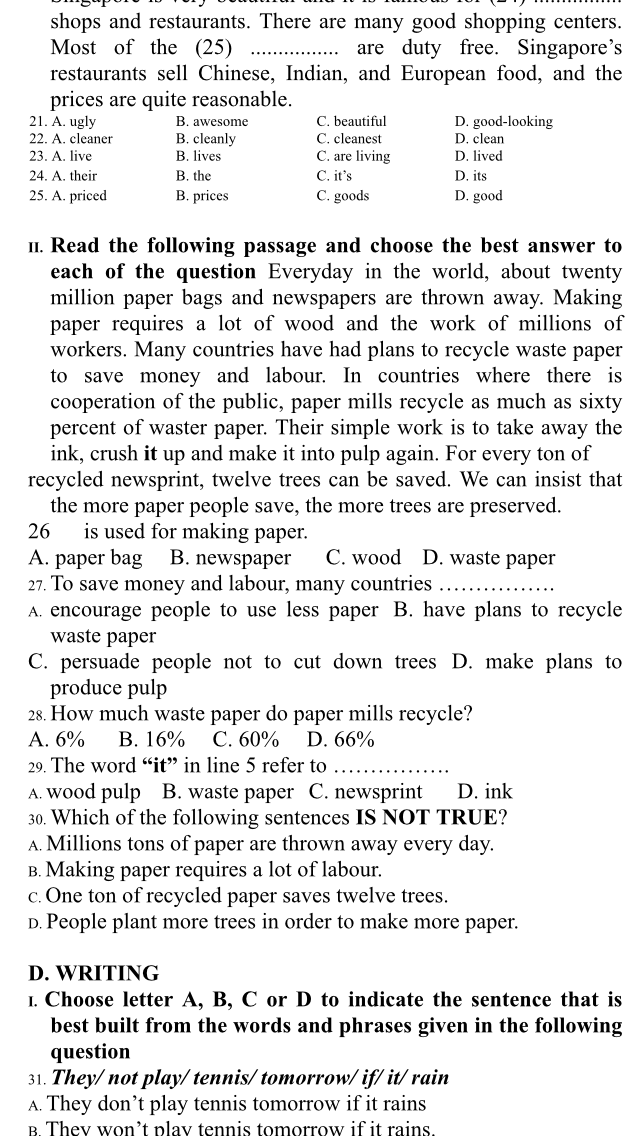Read the following passage and choose the best answer to each question.
Predictions about the Cities of the Future
Cities are built to survive and prosper. Over the years, we have learned to transform our surroundings according to our needs. We have cut through mountains to make more land and created artificial islands to make skyscrapers. City planning, as an organized profession, has existed for less than a century. However, a considerable amount of evidence (both archaeological and historical) proves the existence of fully planned cities in ancient times. Over the years, humans have made some mistakes in terms of using an excessive amount of resources for cities. This gives rise to the question of how sustainable the cities of the future would be. We might be looking at smart cities in which street lights would only switch on when you are close by and traffic light would be eliminated by smart driving. The cities of the future would try to save our resources rather than deplete them. An example of an advanced city is Kansas. Plans are in place to make Kansas a smart futuristic city in the future. Planners are considering introducing sensors to monitor the water mains. Warning would be issued to city officials when the infrastructure requires repair or replacement. In this way, the city would never be at risk of having broken pipes. While the idea sounds fantastic, a large amount of rational critique has called this plan an oversold dream. Amy Glasmier is an urban planning professor at MIT. She is a smart city skeptic who believes that all the research and talk is great but gravely oversold.
Question: All of the following statements may be true about smart cities EXCEPT that ______.
A. street lights automatically switch on when necessary
B. traffic light would be controlled by smart driving
C. smart driving wouldn’t need traffic light
D. cities in the future would conserve energy




Đáp án:
Tất cả các câu sau đây có thể đúng về các thành phố thông minh NGOẠI TRỪ ______.
A. đèn đường tự động bật khi cần thiết
B. đèn giao thông sẽ được kiểm soát bởi lái xe thông minh
C. lái xe thông minh sẽ không cần đèn giao thông
D. các thành phố trong tương lai sẽ bảo tồn năng lượng
Thông tin: We might be looking at smart cities in which street lights would only switch on when you are close by and traffic light would be eliminated by smart driving.
eliminate: loại bỏ
Tạm dịch: Chúng tôi có thể nhìn vào các thành phố thông minh, trong đó đèn đường sẽ chỉ bật khi bạn ở gần và đèn giao thông sẽ bị loại bỏ nhờ việc lái xe thông minh.
=> All of the following statements may be true about smart cities EXCEPT that traffic light would be controlled by smart driving.
Đáp án cần chọn là: B